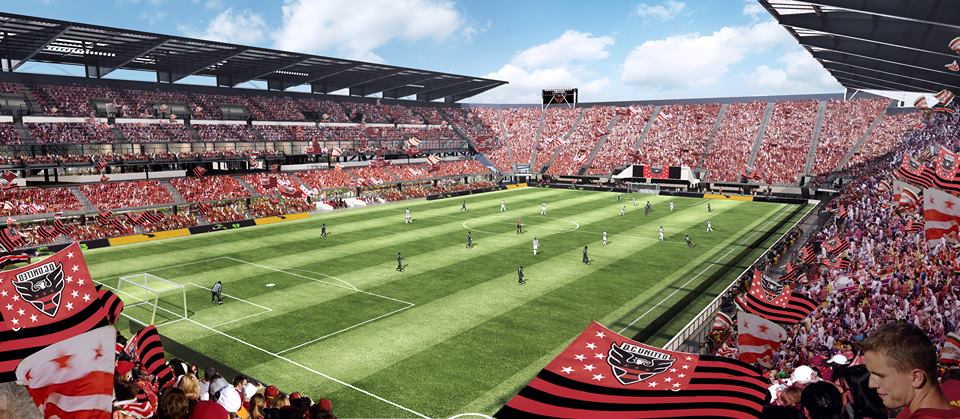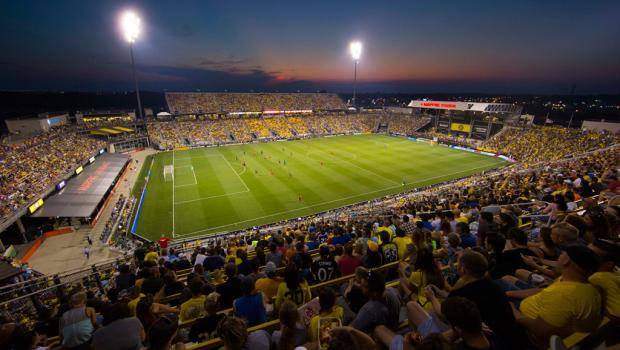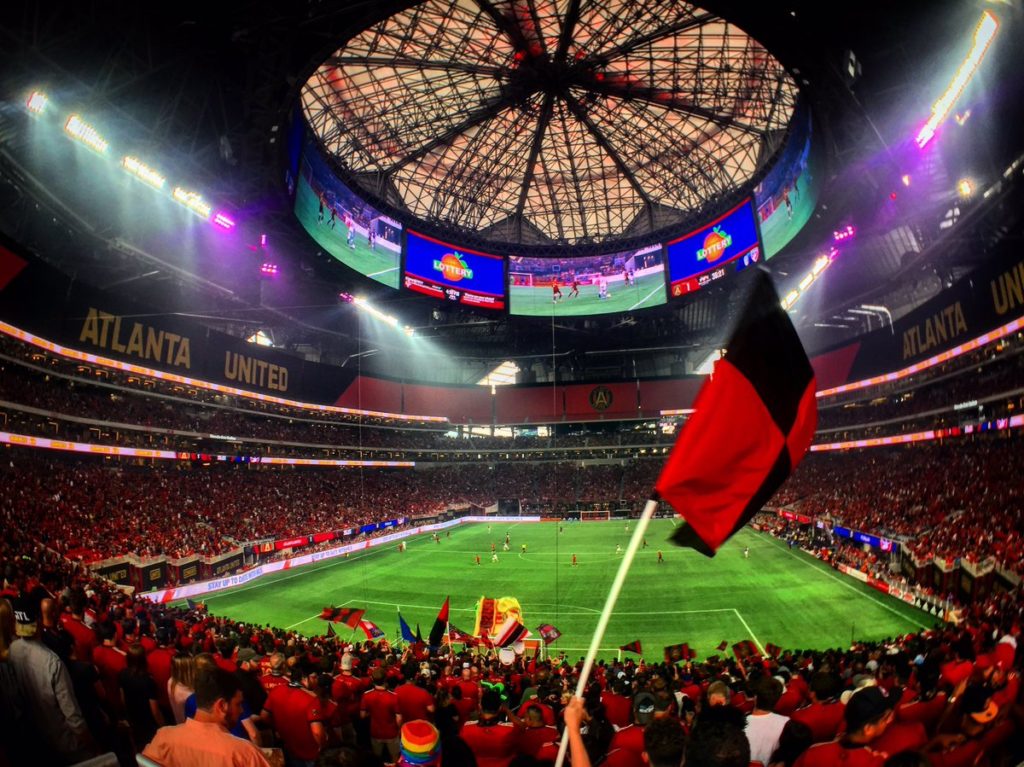In many ways, the history and health of soccer-specific stadiums is the key to understanding MLS.
In the early days of the league, most teams shared a venue. The stadiums were mostly football stadiums, and soccer was an afterthought.
“When the original business came together, there was no plan for soccer stadiums,” MLS Commissioner Don Garber said in an interview with Yahoo last year. “They thought that MLS would play in everybody else’s large buildings as a secondary tenant.”
MLS began play in 1996 with 10 teams, but the league struggled badly in the early years. Attendance was low, and the league and its franchises were losing millions.
In 1999, however, two developments changed the course of the league.
First, Don Garber took over as league Commissioner. Garber, a former NFL executive, eventually changed the course of MLS.
Second, Lamar Hunt, who coined the term “Superbowl” to brand the AFL/NFL championship, was behind a term key to the future of soccer, the “soccer-specific” stadium.
Hunt, who owned the Kansas City Wizards (now Sporting Kansas City), Columbus Crew and FC Dallas at various points, coined the term “soccer-specific” to describe the first purpose built professional soccer stadium in MLS, which he financed, MAPFRE Stadium (below) in Columbus, Ohio, opened in 1999.
The idea behind soccer-specific venues was to create stadiums that were more akin to the European model – spaces facilitating more intimate and engaged fan experiences. A soccer-specific stadium typically has amenities and scale suitable for soccer in North America, with capacity between 18,000-30,000, seats close to the pitch and at pitch level, and it is often topped by a roof to channel sound and create further intimacy.
After a brief period of MLS contraction and solidification early in Garber’s tenure, he became a proponent of the model of league expansion through facility development. The idea took hold that a more positive fan experience, and more organizational control of ticket and sponsorship revenue – the very survival of the league – could only be achieved with franchises building their own stadiums.
The era of soccer-specific stadium building had begun.
Following the Columbus model and with Garber’s support, in 2003, the StubHub Center opened in Los Angeles, followed closely by Toyota Stadium in Dallas in 2005, and Chicago’s Toyota Park in 2006.
In the ten years between 2007 and 2017, ten more soccer-specific stadiums were built for MLS clubs. Currently, 14 teams play in venues that are soccer-specific (Portland’s Providence Park is included because though it was originally built for baseball, it was later renovated specifically for soccer usage, and Toronto’s BMO Field is not included because it was renovated in 2016 to add CFL football).
Soccer-specific is also the dominant model for expansion in the near term. In 2018, D.C. United is moving from multi-purpose RFK Stadium to Audi Stadium, and new franchise LAFC will begin play at soccer-specific Banc of California Stadium. Minnesota United FC will move to their new purpose-built stadium, Allianz Field, in 2019. Miami is also expected to build a soccer-specific stadium in the near future to accommodate an MLS franchise.
“That’s billions of dollars of investment, and lots of support from public figures to help bring this sport to communities,” Garber told Yahoo. “It’s what’s transformed our league.”
In addition to financial gains, the trend has also been good for fan experience, as evidenced by attendance figures. In 2000, Garber’s first full year in charge, average MLS attendance was at a low of 13,756 per game. In 2017, it was over 22,000 per game, and the league broke the 8 million fan attendance mark for the first time.
Ironically, perhaps, this year’s attendance mark was set in no small part due to one of the major exceptions to the soccer-specific rule, Atlanta United’s new home, Mercedes-Benz Stadium.
Mercedes-Benz is different, though. Unlike most football stadiums, it was designed with soccer in mind. Sections of seats are moveable to create more soccer-friendly dimensions for the pitch, and the upper level is designed to be curtained off to create a more intimate feel. It is truly a dual-purpose stadium.
It is a model more franchises may emulate, because it’s working. Atlanta United FC drew more than 800,000 fans this regular season, with more than 70,000 fans at several games, and an average attendance figure of 48,200, first in the league by almost 5,000. More than just the facility is at play in those numbers, but the stadium experience is a significant draw.
Mercedes-Benz Stadium, like the other non soccer-specific stadiums in the league, is an exception to the league’s standard. Some franchises have found success with multi-purpose stadiums, like New York City FC at Yankee Stadium (5th in the league in attendance) with its massive market, or Seattle Sounders at CenturyLink Field (2nd) with a strong community tradition, but the move for the future seems to be toward even more soccer-specific venues.
Of the four finalists recently announced for MLS expansion, Sacramento, Nashville and Cincinnati all have plans to build soccer-specific stadiums. Detroit hopes to upgrade Ford Field, shared with the NFL’s Lions, as part of their bid.
A soccer-specific stadium was once viewed as essential for an MLS expansion bid, until Atlanta proved beyond all doubt that exceptions can work under the right circumstances.
Garber admitted recently that the Atlanta experience has been eye-opening. “We really wanted a soccer stadium here (Atlanta) and Arthur (Blank) said, ‘Hey, this stadium I’m going to build is going to be the best in the world, it’s going to be world class, we’re going to fill it up.’ And he did.”
“So, I don’t know that that changes our point of view in any other market, but certainly when I see what’s happening here and in Seattle I’m happy that we have stadiums that can have 70,000 people in ’em.”.
Even with Atlanta as a notable outlier, clearly the league still believes in the soccer-specific stadium model. Garber’s statement does, however, leave the door of opportunity slightly ajar for other multi-use stadiums in the future.
MLS is a league built on fan experience. Though attendance is strong and getting stronger, television viewership has not kept pace. The league’s fans seem to prefer seeing games in person rather than on a screen, which is a potential pitfall, but one that can be tackled in time.
Commissioner Garber is right to suggest soccer-specific stadium development is what has transformed the MLS. It has been perhaps the prime driver of MLS growth in the last 15 years.
It is also very likely that the story of the league’s growth from this point forward will depend on maintaining and expanding the model of fan experience afforded by soccer-specific stadiums. The future health of the league depends on it.
Images courtesy Audi Field and D.C. United, MAPFRE Stadium, and Mercedes-Benz Stadium.
This article first appeared in the weekly Soccer Stadium Digest newsletter. Are you a subscriber? Sign up here for your free subscription!



